AirDroid Cast
Easy to Play N64 Games from your PC/Phone to TV

Nintendo 64 (N64) holds a significant place in video game history, known for its groundbreaking 3D graphics and revolutionary titles such as Super Mario 64, The Legend of Zelda: Ocarina of Time, Mario Kart 64 and GoldenEye 007.
These games define the gaming industry in the late 1990s. However, as the original hardware ages, you may seek ways to experience these classic games on modern devices. This is where N64 emulators come into play, acting as a bridge between the past and the present.
This article will provide an in-depth look at the current popular N64 emulators for your Super Mario 64,Mario Kart 64, covering their features, advantages, and drawbacks.
N64 emulators primarily come in two types: High-Level Emulation (HLE) and Low-Level Emulation (LLE).
High-Level Emulation (HLE) simulates the expected behavior of the game rather than emulating the exact hardware, resulting in faster performance with lower hardware requirements but potentially causing inaccuracies and compatibility issues.
Low-Level Emulation (LLE) aims to precisely replicate the original hardware at the register level, providing a more accurate and authentic experience, but requiring much more resources and higher hardware performance.
When choosing an emulator, players need to weigh factors such as their hardware capabilities and the type of gaming experience they prioritize. Below are the top N64 emulators available in 2025, each offering distinct features and benefits suitable for different user needs.
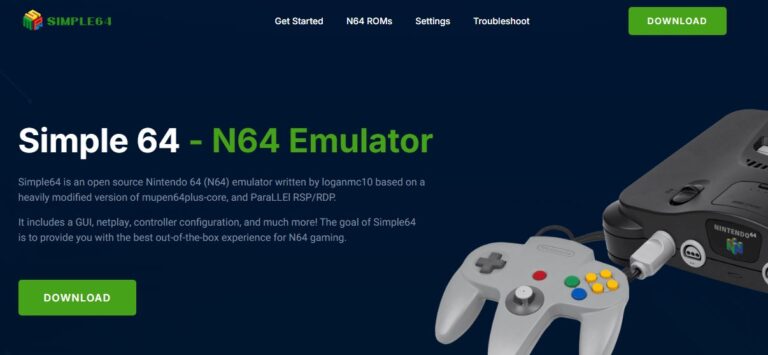
Simple64 is a relatively new open-source N64 emulator that is based on the heavily modified Mupen64Plus core and ParaLLEl RSP/RDP. It aims to deliver excellent out-of-the-box accuracy, with a focus on providing an authentic experience through LLE emulation.
It supports Windows, Linux, and macOS platforms, and features a modern GUI, making it easy for users to operate. Simple64 also supports online multiplayer, controller configuration, high compatibility, enhanced graphics (upscaling), save states, rewinding, and more.
However, Simple64 has higher hardware requirements, needing a GPU that supports Vulkan 1.1+ and an AVX2-capable CPU. This makes it less suitable for older or budget devices. Additionally, it does not support high-definition texture packs, which may affect the visual quality of some games.
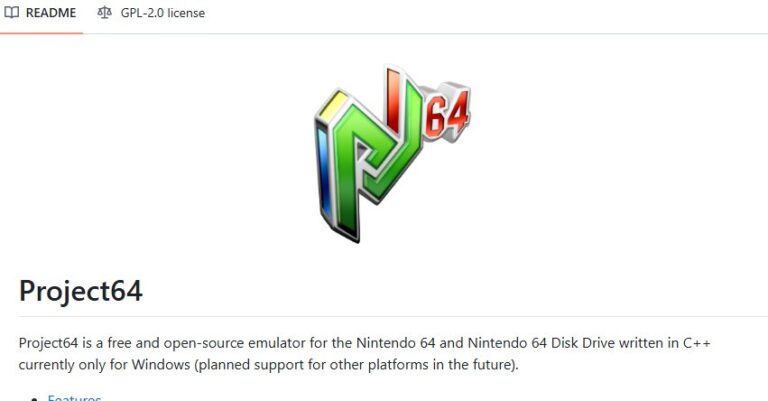
Project64 is a free, open-source N64 emulator primarily for Windows. It is known for its user-friendly interface and good out-of-the-box compatibility, making it a great choice for beginners. Project64 supports high-definition graphics, save states, and full controller support.
The main advantage of Project64 is its ease of use, with a simple setup process that allows players to start playing with minimal configuration. However, its emulation accuracy is relatively low compared to LLE-focused emulators, and it may cause some games to experience issues.
Furthermore, Project64’s plugin system has sometimes caused compatibility problems, and older versions of the emulator had security vulnerabilities with modified ROMs.
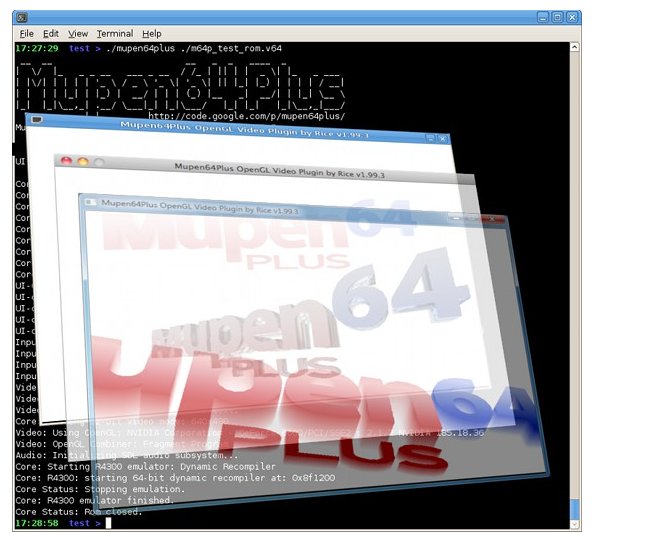
Mupen64Plus is a highly customizable, cross-platform emulator that uses a plugin system. It supports various operating systems, including Windows, Mac, Linux, and Android. Mupen64Plus includes dynamic recompilers for both x86 and ARM CPUs, multiple OpenGL video plugins (such as RiceVideo, Arachnoid, Glide64, Z64), and high-resolution texture support.
Mupen64Plus excels in flexibility and plugin support, allowing for extensive customization based on user preferences. The active community ensures that the emulator is consistently updated. However, its default command-line interface may be intimidating to beginners, and users will likely need additional GUI support for easier navigation.
Plugin compatibility can sometimes be an issue, especially with certain platforms like Raspberry Pi.
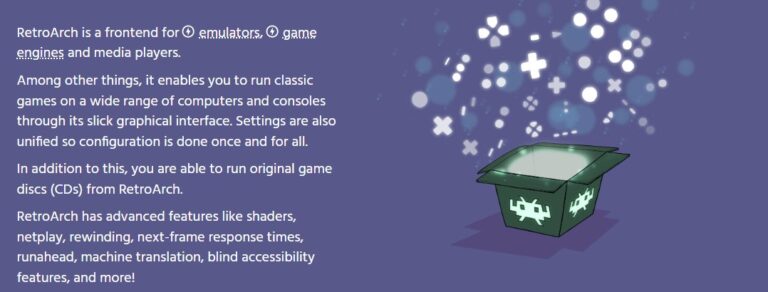
RetroArch is a powerful multi-system emulator frontend that uses “cores” to support various gaming systems. For N64, RetroArch primarily uses the Mupen64Plus-Next core, which offers various video plugin configurations, such as GlideN64 and the highly accurate ParaLLEl-RDP.
RetroArch also supports online multiplayer, rewinding, save states, achievements, recording/streaming, and more.It's strengths lie in its extensive feature set, cross-platform compatibility, and the potential for high-accuracy LLE emulation through the ParaLLEl core.
However, it has a steep learning curve due to the vast number of settings and options, which may be overwhelming for beginners. The differences and choices between the Mupen64Plus-Next and ParaLLEl cores might also cause confusion.
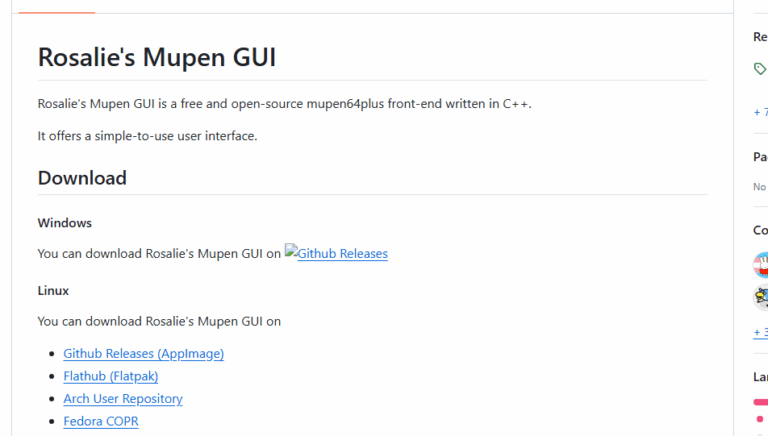
Rosalie's Mupen GUI (RMG) is a free and open-source frontend for Mupen64Plus that aims to provide a more user-friendly interface.
It offers independent settings for each game, a game library grid view with cover art, customizable resolution/aspect ratio, V-Sync, anti-aliasing, texture filtering, and support for up to four controllers.
RMG enhances the usability of Mupen64Plus, making it more accessible for users who are not familiar with command-line interfaces. However, it still suffers from some audio issues (such as crackling) and is not as intuitive as Project64 when it comes to plugin configurations.
Below, we list a table to help you better choose your best emulator for Nitendo 64 games.
| Emulator | Key Features | Supported Platforms | Pros | Cons |
|---|---|---|---|---|
| Simple64 | Accuracy, LLE emulation | Windows, Linux, macOS | High accuracy, modern GUI, online multiplayer | High hardware requirements, no HD texture support |
| Project64 | Ease of use, out-of-the-box setup | Windows, Android | Simple setup, good compatibility for beginners | Lower accuracy, plugin compatibility issues, security concerns |
| Mupen64Plus | Customizability, plugin support | Windows, Mac, Linux, Android | Highly flexible, excellent audio emulation, active community | Command-line interface is not beginner-friendly, plugin compatibility issues |
| RetroArch | Multi-system support, advanced features | Windows, Mac, Linux, Android | Full feature set, cross-platform support, LLE potential | Complex setup, steep learning curve, confusing core choices |
| RMG | Mupen64Plus frontend improvement | Windows, Linux | Improved usability, good balance of performance and accuracy | Some audio issues, GUI not as intuitive as Project64 |
When choosing an emulator, an often overlooked but crucial factor is the community activity and development update frequency behind it. One developer pointed out that N64 emulation "needs to start over with modern technology" and that "community collaboration to optimize it" is crucial.
An emulator with an active development team and a vibrant community (for example, through a Discord server or GitHub page) means that bugs will be fixed faster, compatibility will continue to improve, and new features will continue to be added.
This provides you with a long-term guarantee that your emulation experience can keep up with the times. Therefore, when making a decision, it is worth taking a moment to check the official website or code repository of the emulator to learn about its latest developments.
When using N64 emulators, players might encounter some common issues. Below are possible causes and solutions:
1.Graphics Issues (e.g., glitches, missing textures):
These are often caused by High-Level Emulation (HLE) inaccuracies, incompatible video plugins, or outdated graphics card drivers. To resolve them, try switching video plugins (such as GLideN64 or ParaLLEl-RDP), update your GPU drivers, and experiment with different graphical settings within the emulator. This applies to plugins used with emulators like Project64, Mupen64Plus, or RetroArch cores.
2. Audio Crackling or Distortion:
This typically results from incorrect audio plugin settings or timing issues. Solutions include trying alternative audio plugins (like Azimer's Audio) and adjusting the audio buffer size in the plugin's settings. This issue can occur in emulators like Project64, Mupen64Plus, or Rosalie's Mupen GUI.
3. Input Lag (Delayed Controller Response):
Causes include Vertical Sync (V-Sync) settings, framebuffer emulation overhead, or insufficient hardware resources. To reduce lag, enable features like "Hard GPU Sync" (in RetroArch), disable framebuffer emulation where possible, and ensure your hardware meets the emulator's demands. Check video settings in RetroArch, Mupen64Plus, or Simple64.
4. Performance Issues / Low Frames Per Second (FPS):
Slowdowns usually stem from hardware that isn't powerful enough or emulator settings set too high. Improve performance by lowering the internal resolution, disabling demanding graphical enhancements (like anti-aliasing or high-res textures), and optimizing your hardware. This is relevant for all emulators, especially when using more accurate (but demanding) Low-Level Emulation (LLE) modes, or on lower-powered devices like the Raspberry Pi.
5. Game Crashes or Failure to Start:
This is frequently due to a corrupted ROM file or an incompatible combination of emulator version and plugin. Fixes involve re-downloading the ROM, checking the emulator's log files for error messages, and trying different versions of the emulator or its plugins. This potential issue affects all N64 emulators.
6. ROM Not Loading:
If the emulator fails to load a ROM, common reasons include an incorrect file path, an incompatible ROM file format (ensure it's a supported type like .n64, .v64, .z64, or .ndd), or a corrupt ROM file. Solutions are to verify the ROM's location and format, ensure compressed ROMs (like .zip) are either supported or extracted first, and try using a different ROM file if corruption is suspected. This problem can occur with any emulator.
Easy to Play N64 Games from your PC/Phone to TV
In conclusion, choosing the right N64 emulator depends on your hardware, gaming needs, and preferences. If you seek high-accuracy emulation, Simple64 is the best choice. For beginners, Project64 remains a solid option due to its ease of use and broad compatibility. Meanwhile, RetroArch is ideal for those who need cross-platform functionality and multi-system support.
Regardless of which emulator you choose, selecting the one that best fits your needs will help you relive those classic gaming experiences.
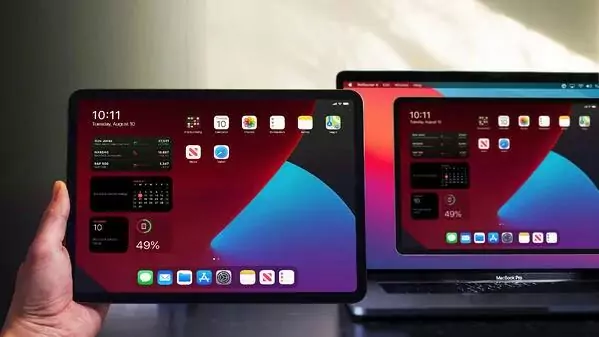

Leave a Reply.